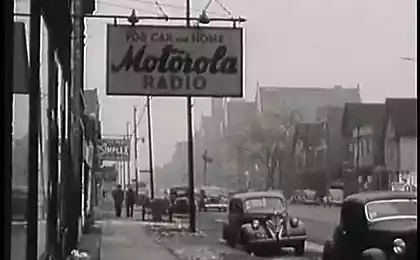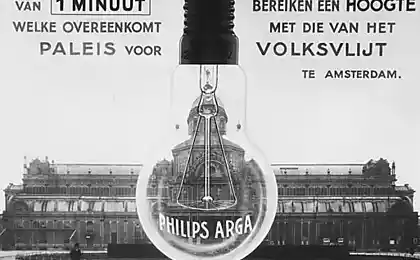716
The first wave of mobile
«Omnia mea mecum porto» (All I carry with myself)
As it tried to calculate how many functions the device can perform the modern smartphone. I counted about thirty and probably missed something. And all this in your pocket, a mobile version. Mobility is a very attractive property. The need to carry a something electronic, small and useful originated long ago as 60 years ago. Then it rose this first wave of mobile devices. And, of course, it was the first portable radios. Laptops, notebooks, palmtop, tablets, smartphones, all this was already then.


In the photo to draw attention raschudesny Japanese middle pocket radio United Deluxe RN-5 50s. Its dimensions 167h97h45 mm. Yes, warm, but the lamp. Power - two batteries, the anode 67, 5 volts and filament - 1, 5 volts. To the north of our country - that is necessary. Unfortunately, that any such domestic industry has not mastered. But he mastered more. About it and want to talk. The article used photos from wonderful site dedicated to the domestic radio www.rw6ase.narod.ru.
Remembering will be the most popular and exotic first domestic portable (or, in modern interpretation - mobile) device
. In the mid 50-ies in the USSR were first tube portable radios. Perhaps the first of them - the radio "Traffic." This ebony suitcase weighing 4 to 5 kg. Year 1954. To be honest, seeing him live was not necessary. The new, unusual items. It seems the popularity has not found and mentioned only because it was the first.


Next Tube radio "Tourist", which was issued to the famous Riga factory "VEF" was very popular before the advent of transistor radios. Year - 1955. It weighed 2, 4 kg and can operate on battery up to 30 hours. There was his and "dock" in which was placed the rectifier for mains. He worked in a range of LW and SW.


Since 1956 began production of domestic transistor radios. Until 1959, these were mostly experimental batches of several thousand pieces, and the weather, so to speak, did not. The first mass-receiver - it's probably the "Atmosphere", Voronezh Radio Works. The market entered in 1959. Parameters approximately as the previously described tube counterparts, but still weight decreased by 2 times - 1, 3 kg. With a light hand of consumers, especially not delve into the particular product names, these radios have received a simple name - "Transistor". It is quite normal combinations of those years - "to listen to the transistor", "grasp the transistor", "got the batteries in the transistor," etc. It must be said that the lack of "transistors" in those years, gave birth to the process of mass production of self. It was a popular scheme of the receiver "Moscow" 5 transistor design V. Plotnikov. The scheme was published in the "Radio" magazine in 1958. The most popular body for such products are plastic soap dish. So, such a receiver is often simply called "Soap." Many years later, "soap box" became known as compact film cameras.
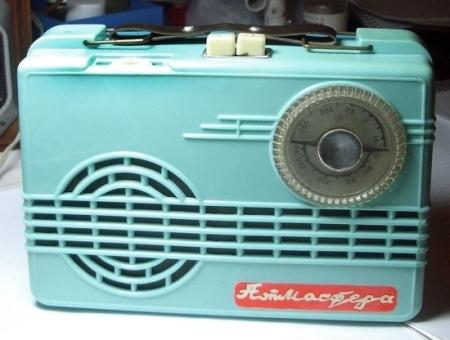
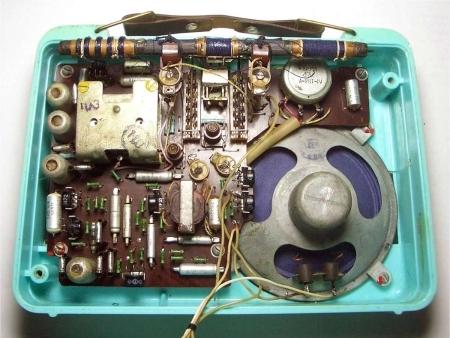
Rare radio in 1960 - "Leningrad". Driving and design - an attempt to repeat the '' Trans-Oceanic Royal-1000 '' - 1957 model year, the American company «Zenith». Compiled by 10 transistors. It has 7 ranges - LF, MF, HF and 5 sub-bands. Drum switch ranges, voltage regulator, allows to maintain performance while reducing power from 12V to 8V.

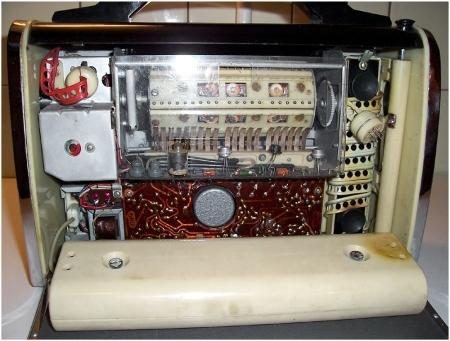
Probably the most popular in the USSR portable receiver - "Spidola". Produced since 1960, Riga VEF radio, and was famous for its high reliability. many modifications were produced in the following years (WEF Spidola, Spidola10 WEF, WEF-transistor VEF12). Owning this miracle of technology has been a dream of many. Owner "Spīdola" Walking down the street with my favorite, looked almost like a modern major driving a convertible Mercedes SLK. I must say that before the advent of portable tape recorders promenade enabled "transistor" was common. It does not matter that there is sound from the receiver - Russian folk songs, a roundup or radio play
.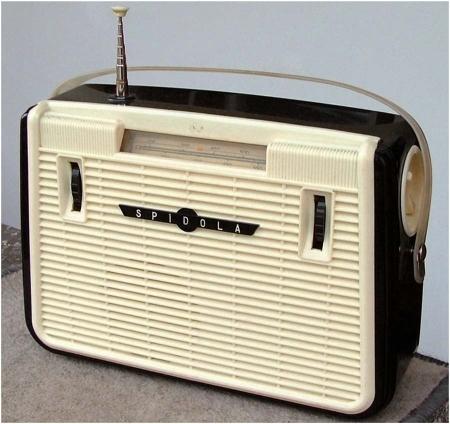
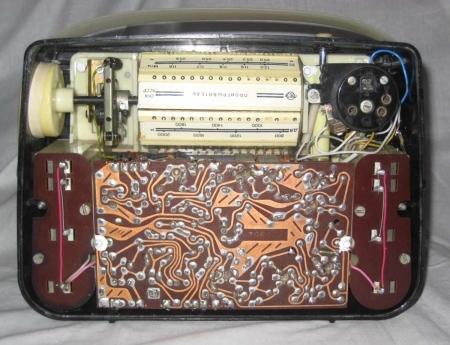
Another popular product is the WEF factory - pocket radio "Selga". Note the proud inscription - "7 transistor» on the front panel. The more - the cooler. Imagine this inscription on a smartphone, for example "4567732512 transistor».


This palmtop 1963 - radio "Kosmos". Dimensions receiver - 27h60h70 mm. Its weight - 150 g By the way, the receiver has been exported to many countries (Cuba, Greece, Libya, Bulgaria, Yugoslavia, Afghanistan, Belgium, England)
.

The first attempt to unite the different devices into one - "Signal" pocket radio. Issue 1964. In addition to the actual receiver in case there are clocks. They allow you to include it in the set time. Rise and shine.

Miniature transistor radio "Micro" let Zelenograd factory "Angstrom" since 1965. We can say that it is made well, almost on integrated circuits. The radio on board from the glass-ceramic through special stencils applied six layers of different materials of which the resistance formed wires, pads, linings and insulation of capacitors. Transistors in digital receiver.


Next original exhibit - a real laptop, in the original sense of the word. Notebook and a radio in it. Radio "Surprise" 1967 model year. This was achieved through the use of specially designed miniature loudspeaker 4 mm in height. Receiver Dimensions with notebook 135h88h17 mm. As you can see, marketing moaning about the thickness of smartphones - well forgotten old
.
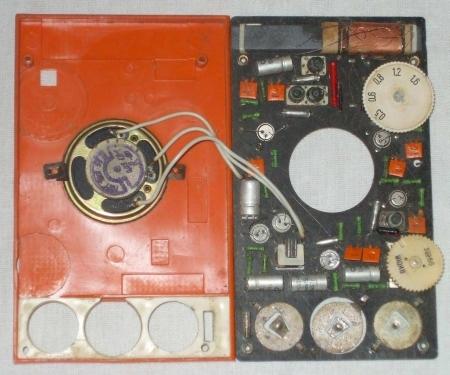
Today there are entire product line (notebooks, tablets, smartphones) for special purposes. For the military, industrial conditions, etc. Radio MP-64 (Titmouse) 1967 release is mainly for political officers of all ranks in the military schools and in the army to track news and events occurring in the world and for the subsequent transmission of information on political studies. Ranges - LF, MF, HF. The exterior of the right makes it possible to understand that something special and purely ideologically in front of you.


Let's look at once in 1974, and get acquainted with another mobile device - the first portable high-end radio "Leningrad-002". His wooden case lined with veneer fine wood. Range LF, MF, HF and VHF. The only drawback - the weight of the batteries about 10 Kg. However, walking with "transistor" by this time, already a thing of the past. A pity, sports equipment was good for music lovers.
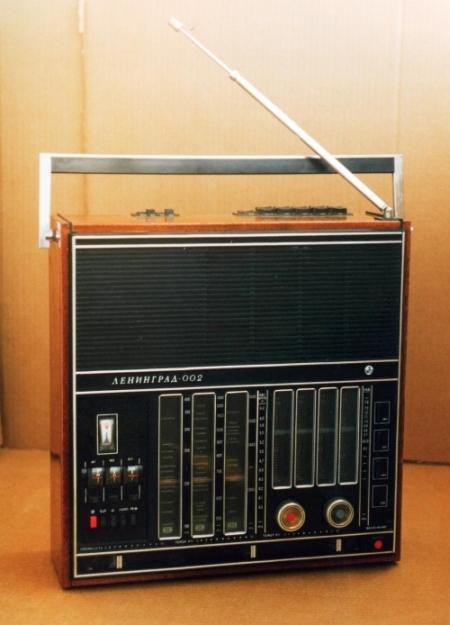

But what if you absolutely need the freedom to choose what to listen to and when to listen? Then, of course, "Mriya" - the device for you. The first and only portable radiogram (radio + turntable). It was released in 1967. In his left hand - a stack of plates in the right "Mriya". He stopped and found a level surface, set "Mriyu" set the record company "Melody" and enjoy the freedom of choice.

The portable tape recorder - it is a complete liberation. You're not just a listener of radio station "Mayak" and the client company "Melody", a truly free man. The first domestic mass portable tape "Spring", 1963 edition. Capacity of magnetic tape cassettes of type 2 or 6 of about 100 meters. The speed of movement of the magnetic tape 9, 53 cm / sec. The recording time on each track 17 minutes.
5 Weight 5 Kg. Rachmaninoff's Second Concerto for piano and orchestra (duration 35 minutes), unfortunately, requires a 2-cassette and dual permutation. But some songs of Elvis Presley, you can listen without being distracted by manipulation of the tape.


Tape "Romantic" in 1965 release with batteries weighed 5 kg. The continuous recording time when using coils enclosing 180 meters tape 2x30 minutes.

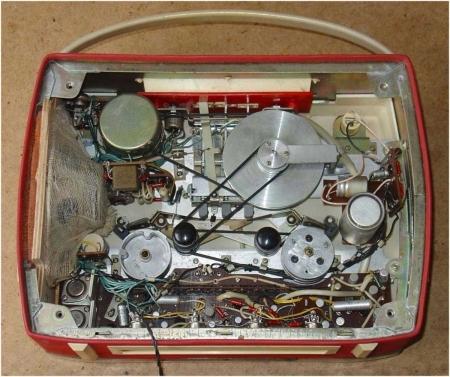
The first domestic tape recorder "Desna" appeared in 1969. This was almost an exact copy of the tape «Philips EL-3300 '' - 1967 model year. 1 Weight 8 Kg - a radially! Complete, unfortunately, I did not come with a pencil faces. The user himself had to attend to "Koh-i-Noor" buy Czech firm pencil to manually rewind the tape jammed.


I have deliberately limited the "first mobile wave" period of the 50s-60s. Then it was really new and fresh. The perception of time is subjective. For someone described -. "Hoary antiquity", and for some it was just yesterday
Source: geektimes.ru/post/277114/
As it tried to calculate how many functions the device can perform the modern smartphone. I counted about thirty and probably missed something. And all this in your pocket, a mobile version. Mobility is a very attractive property. The need to carry a something electronic, small and useful originated long ago as 60 years ago. Then it rose this first wave of mobile devices. And, of course, it was the first portable radios. Laptops, notebooks, palmtop, tablets, smartphones, all this was already then.


In the photo to draw attention raschudesny Japanese middle pocket radio United Deluxe RN-5 50s. Its dimensions 167h97h45 mm. Yes, warm, but the lamp. Power - two batteries, the anode 67, 5 volts and filament - 1, 5 volts. To the north of our country - that is necessary. Unfortunately, that any such domestic industry has not mastered. But he mastered more. About it and want to talk. The article used photos from wonderful site dedicated to the domestic radio www.rw6ase.narod.ru.
Remembering will be the most popular and exotic first domestic portable (or, in modern interpretation - mobile) device
. In the mid 50-ies in the USSR were first tube portable radios. Perhaps the first of them - the radio "Traffic." This ebony suitcase weighing 4 to 5 kg. Year 1954. To be honest, seeing him live was not necessary. The new, unusual items. It seems the popularity has not found and mentioned only because it was the first.


Next Tube radio "Tourist", which was issued to the famous Riga factory "VEF" was very popular before the advent of transistor radios. Year - 1955. It weighed 2, 4 kg and can operate on battery up to 30 hours. There was his and "dock" in which was placed the rectifier for mains. He worked in a range of LW and SW.


Since 1956 began production of domestic transistor radios. Until 1959, these were mostly experimental batches of several thousand pieces, and the weather, so to speak, did not. The first mass-receiver - it's probably the "Atmosphere", Voronezh Radio Works. The market entered in 1959. Parameters approximately as the previously described tube counterparts, but still weight decreased by 2 times - 1, 3 kg. With a light hand of consumers, especially not delve into the particular product names, these radios have received a simple name - "Transistor". It is quite normal combinations of those years - "to listen to the transistor", "grasp the transistor", "got the batteries in the transistor," etc. It must be said that the lack of "transistors" in those years, gave birth to the process of mass production of self. It was a popular scheme of the receiver "Moscow" 5 transistor design V. Plotnikov. The scheme was published in the "Radio" magazine in 1958. The most popular body for such products are plastic soap dish. So, such a receiver is often simply called "Soap." Many years later, "soap box" became known as compact film cameras.


Rare radio in 1960 - "Leningrad". Driving and design - an attempt to repeat the '' Trans-Oceanic Royal-1000 '' - 1957 model year, the American company «Zenith». Compiled by 10 transistors. It has 7 ranges - LF, MF, HF and 5 sub-bands. Drum switch ranges, voltage regulator, allows to maintain performance while reducing power from 12V to 8V.


Probably the most popular in the USSR portable receiver - "Spidola". Produced since 1960, Riga VEF radio, and was famous for its high reliability. many modifications were produced in the following years (WEF Spidola, Spidola10 WEF, WEF-transistor VEF12). Owning this miracle of technology has been a dream of many. Owner "Spīdola" Walking down the street with my favorite, looked almost like a modern major driving a convertible Mercedes SLK. I must say that before the advent of portable tape recorders promenade enabled "transistor" was common. It does not matter that there is sound from the receiver - Russian folk songs, a roundup or radio play
.


Another popular product is the WEF factory - pocket radio "Selga". Note the proud inscription - "7 transistor» on the front panel. The more - the cooler. Imagine this inscription on a smartphone, for example "4567732512 transistor».


This palmtop 1963 - radio "Kosmos". Dimensions receiver - 27h60h70 mm. Its weight - 150 g By the way, the receiver has been exported to many countries (Cuba, Greece, Libya, Bulgaria, Yugoslavia, Afghanistan, Belgium, England)
.


The first attempt to unite the different devices into one - "Signal" pocket radio. Issue 1964. In addition to the actual receiver in case there are clocks. They allow you to include it in the set time. Rise and shine.

Miniature transistor radio "Micro" let Zelenograd factory "Angstrom" since 1965. We can say that it is made well, almost on integrated circuits. The radio on board from the glass-ceramic through special stencils applied six layers of different materials of which the resistance formed wires, pads, linings and insulation of capacitors. Transistors in digital receiver.


Next original exhibit - a real laptop, in the original sense of the word. Notebook and a radio in it. Radio "Surprise" 1967 model year. This was achieved through the use of specially designed miniature loudspeaker 4 mm in height. Receiver Dimensions with notebook 135h88h17 mm. As you can see, marketing moaning about the thickness of smartphones - well forgotten old
.


Today there are entire product line (notebooks, tablets, smartphones) for special purposes. For the military, industrial conditions, etc. Radio MP-64 (Titmouse) 1967 release is mainly for political officers of all ranks in the military schools and in the army to track news and events occurring in the world and for the subsequent transmission of information on political studies. Ranges - LF, MF, HF. The exterior of the right makes it possible to understand that something special and purely ideologically in front of you.


Let's look at once in 1974, and get acquainted with another mobile device - the first portable high-end radio "Leningrad-002". His wooden case lined with veneer fine wood. Range LF, MF, HF and VHF. The only drawback - the weight of the batteries about 10 Kg. However, walking with "transistor" by this time, already a thing of the past. A pity, sports equipment was good for music lovers.


But what if you absolutely need the freedom to choose what to listen to and when to listen? Then, of course, "Mriya" - the device for you. The first and only portable radiogram (radio + turntable). It was released in 1967. In his left hand - a stack of plates in the right "Mriya". He stopped and found a level surface, set "Mriyu" set the record company "Melody" and enjoy the freedom of choice.

The portable tape recorder - it is a complete liberation. You're not just a listener of radio station "Mayak" and the client company "Melody", a truly free man. The first domestic mass portable tape "Spring", 1963 edition. Capacity of magnetic tape cassettes of type 2 or 6 of about 100 meters. The speed of movement of the magnetic tape 9, 53 cm / sec. The recording time on each track 17 minutes.
5 Weight 5 Kg. Rachmaninoff's Second Concerto for piano and orchestra (duration 35 minutes), unfortunately, requires a 2-cassette and dual permutation. But some songs of Elvis Presley, you can listen without being distracted by manipulation of the tape.


Tape "Romantic" in 1965 release with batteries weighed 5 kg. The continuous recording time when using coils enclosing 180 meters tape 2x30 minutes.


The first domestic tape recorder "Desna" appeared in 1969. This was almost an exact copy of the tape «Philips EL-3300 '' - 1967 model year. 1 Weight 8 Kg - a radially! Complete, unfortunately, I did not come with a pencil faces. The user himself had to attend to "Koh-i-Noor" buy Czech firm pencil to manually rewind the tape jammed.


I have deliberately limited the "first mobile wave" period of the 50s-60s. Then it was really new and fresh. The perception of time is subjective. For someone described -. "Hoary antiquity", and for some it was just yesterday
Source: geektimes.ru/post/277114/
Slightly fucked: 25 Summer Shots celebrities who did not go unnoticed
Resetting immune system. Radical new method for the treatment of multiple sclerosis has proven effective



